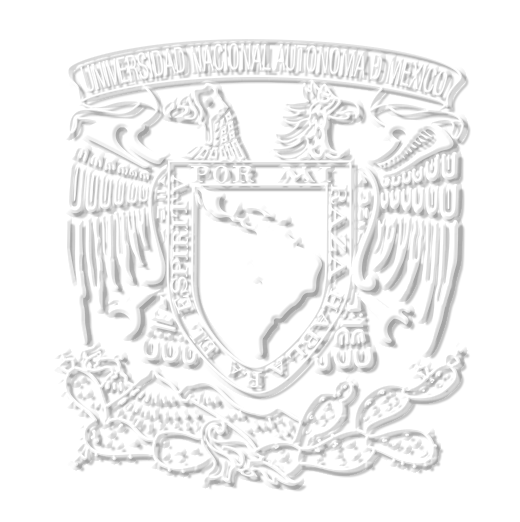Author Guidelines
The editorial management and publication process is carried out exclusively through the journal’s online platform at:http://rev-ib.unam.mx/ib
The editorial team of the journal reserves the right to return works that have been rejected.
1. General information on the journal
Investigación Bibliotecológica: archivonomía, bibliotecología e información is an open-access, full-text Mexican peer-reviewed scientific journal. Launched in 1986 under the auspices of the University Library Research Center (CUIB), which in April 2012 was renamed the Institute of Library and Information Research (IIBI). Published without interruption for thirty-two years, the journal has become one of the leading specialized scientific publications in Latin America. Initially published twice annually, in 2008 it began to publish trice-annually, and as of January of 2018 it shall be published on a quarterly basis. In addition to the print edition (under ISSN 0187-358X), the journal has since 2006 been issued in an online digital version (under ISSN 2448-8321), which can be accessed at the Portal of Electronic Journals of the General Directorate of Publications and Editorial Promotion of the UNAM. Since 2011, the journal has been an Open Access publication.
1.1 Area of inquiry
The journal Investigación Bibliotecológica: archivonomía, bibliotecología e información receives and considers submissions in the following fields of inquiry: organization and management of information and knowledge, information and knowledge technologies, information, knowledge and society, metrics of information and scientific knowledge, users of information, reading, information services and resources, library education, history and foundations of librarianship and information studies, as well as multi-, inter- and trans-disciplinary lines of inquiry in Archivology, Librarianship, Information Science and Documentation.
1.2 Target public
The journal Investigación Bibliotecológica: archivonomía, bibliotecología e información is targeted to professionals, academics, professors and researchers who generate research results to the disciplinary development of Library and Information Sciences.
1.3 Type of submissions received
The journal accepts works written in Spanish, English and Portuguese of the following kinds:
Research report. This kind of paper contains original, unpublished research results. Submissions shall comply with the following structure: title in spanish language and English and Portuguese (if applicable), abstract in Spanish language and English and Portuguese (if applicable), key words in Spanish language and English and Portuguese (if applicable), and the body of the paper in Spanish or English or Portuguese language. Papers shall have a minimum of 4,500 words and maximum 5,000, including references, figures and tables. A maximum of four pages for annexes are permitted above the word count cap. Research report submissions are subject to editorial and academic review.
2. Presentation and structure of submissions
Submissions shall be drafted in Word, with numbered pages, using 12-point Times New Roman font and line spacing of 1.5, with superior and inferior margins of 2.5 cm, and right and left margins of 3.0 cm.
2.2 Formal presentation
Title. The title of submissions must accurately represent the content of the work, while avoiding phrases such as "contribution to", "study of" or "analysis of." Titles shall be concrete in nature, without resorting to metaphors, parables or figurative language, and shall be limited to a maximum of 12 words.
Abstract. The abstract shall provide an orderly overview of the thrust of the paper in terms of its objective, methodology, main results and most significant conclusions. If the abstract is poorly written, this can indicate the need to make significant changes in the paper itself during the editorial review process. Abstracts shall be limited to a maximum of 200.
Keywords or key phrases. These elements are used in search engines to retrieve content. As such they should be chosen carefully. Synonymy and complex phrases should be avoided, and without exceeding four discrete words or phrases.
The title, abstract and key words of Spanish and Portuguese language works must be submitted with professional English translation. English language submissions shall include these same elements in Spanish. Automated translation engines shall not be used for these translations.
Name of the authors. The submission shall state names and surnames without mention of degrees, academic titles or teaching category. Names shall match those registered with ORCID (https://orcid.org/). The particulars of each of the authors should be sent separately from the body of the paper as shown below (Authors' data format file ):
- Full name
- Academic degrees
- Name of the organization in which you are professionally affiliated and country
- Contact e-mail for academic purposes
- Telephone number for academic purpose
- Mailing address for academic purposes
- Name of contact author for correspondence
Institutional affiliation.The department or faculty to which each of the authors belongs. In this case, provide only the second level of adscription. Example:
Correct: Faculty of Science, National Autonomous University of Mexico
Incorrect: Mathematics Group, Faculty of Science, National Autonomous University of Mexico
2.3 Structure of body text
a) Introduction. This section presents an up-to-date discussion of the research problem, the rationale for performing the research, and its impact and originality. It shall include only those bibliographical references in direct relationship with the research variables. Acronyms employed throughout the paper should be introduced in this section.
b) Methodology. This section provides an account of the sources, techniques, processes, models, programs, and research strategies employed as well as of variables and research indicators. This section is important because it underpins reproducibility.
c) Presentation of results and analysis. This section presents results as a coherent outgrowth of the methodology described in the previous section.
d) Discussion. Employing a discourse based on the scientific method, research results are compared and contrasted to those reported in international literature in order arrive at cogent interpretations.
e) Conclusions, recommendations and/or final considerations. Insofar as the established objective has been achieved, conclusions provide an account of the impact of the research from which recommendations are generally proffered. In the absence of recommendations, final considerations should be noted.
f) Notes. These are acceptable only in exceptional cases.
g) Acknowledgments. This section acknowledges agencies providing financial support for the research project and those persons who directly or indirectly aided researchers in the development of the research report. This script must be send separately, as a text archive.
h) Annexes. Complementary material directly associated with the research.
With the exception of editorial comments, papers accepted for publication shall observe formal presentation guidelines. Research reports shall employ the a, b, c, d and e paragraph structure. Review papers shall enjoy greater structural flexibility with regard to paragraphs b, c and d; however, sections and sub-sections shall always be employed. Editorial comment submissions shall not require a strict formal structure. Reviews shall provide the complete bibliographic information of the work under review in compliance with the bibliography style used by the journal.
2.4 Tables and figures
Tables in the form of image object shall not be accepted. These elements shall be submitted in Excel and/or Word files included in the text. Titles of tables shall be concise and in direct relation to contents.
Figures such as diagrams, charts, graphs photographs, drawings, maps, etc. must be sent separately in TIF or JPG file format. These elements shall employ gray scale, of 300 dpi, with a width of 12 cm. and keep the proportion with the height. Images and figures that do not met these specifications shall be returned to the author and the submission shall be dismissed from consideration. Graphic elements not created by the author shall be properly sourced.
Tables and figures are incorporated in the text, and additionally attach the figures as independent files with the indicated characteristics.
2.5 Sections and sub-sections
The titles of sections sand subsections shall be numbered progressively to the third level, as shown below:
3. Model
3.1 Establishment of prospective model for evaluation of nanotechnology market
3.1.1 Correlation of model variables
2.6 Citations
Citations shall comply with author-year citation style of The Chicago Manual of Style (http://www.chicagomanualofstyle.org/tools_citationguide.html). Authors should also consider the following:
- Quoted text of up to four lines in length shall be included in the text and set between double quotation marks (“ ”).
- Quoted text of five lines or longer shall be set apart in separate a paragraph using a left margin of 1 cm with the same line spacing as the main body text.
- The source shall be included in the text as follows:
One to three authors:
Last name, year: page number.
Surname and Surname, year: page number
Surname, surname and surname, year: page number
Four authors or more:
Surname et al., year: page number.
* The names and surnames of up to 10 authors must be annotated in the list of references, and from 11 onward the first 7 will be followed by et al.
- Providing page number where quoted text is taken from is mandatory, except when the source are unnumbered, which is often the case with digital sources.
Footnotes shall be numbered consecutively and used exclusively for comments, explanations, clarifications or expansions on the topic treated in the body text. The font used in footnote should comply with author-year style.
Any source mentioned in the body text must be duly referenced in the Works cited, otherwise the submission will be rejected.
2.7 References
References shall comply with author-year style of The Chicago Manual of Style (http://www.chicagomanualofstyle.org/tools_citationguide.html).
The works cited should include only those sources used directly in the content of the paper. The author should keep in mind that in accord with journal policy, self-citations shall not exceed 20% of those included in the body of the text and 10% of the Works cited.
Books
Lead author's last name, lead author's name, first and last name of second author, first and last name of third author. Year. Title in italics, Edition number. Country: publisher.
Rodriguez Jimenez, Gloria, Deisy Gonzalez Estupiñan, Ana Consuelo Rodríguez y Aron Vidal Ramos. 2017. La ciencia abierta y el profesional de la información, 3ra ed. Ciudad de México: Alfagrama.
Book chapters
Lead author's last name, lead author's name and second author's name and last name. Year. "Title of the chapter in quotation marks". Title of the work, edited/coordinated by name and surname of the authors, pages comprising the chapter separated by hyphen. Country: publisher.
Rodriguez Jimenez, Gloria y Deisy Gonzalez Estupiñan. 2017. "La ciencia abierta y el profesional de la información", en Transformación social de la Ciencias de la Información, editado por Ana Consuelo Rodriguez y Aron Vidal Ramos, 34-67. Ciudad de México: Alfagrama.
Scholarly research papers
Lead author's last name, lead author's name, second author’s first and last names, first and last name of third author. Year. "Title of the article in quotation marks". Complete title of the journal, in italics year (volume): pages comprising the paper separated by a hyphen. DOI or URL
Ravenscroft, James, Maria Liakata, Amanda Clare y Daniel Duma. 2017. "Measuring scientific impact beyond academia: An assessment of existing impact metrics and proposed improvements". PLoS ONE 12 (3): 1-21. doi: 10.1371/journal.pone.0173152
Conference papers
Last name, name. Year. "Title of the work in quotation marks". Work presented in Name of the conference/meeting/symposium, etc., city, country, conference date (day and month).
Hammarfelt, Brian. 2013. “An examination of the possibilities that altmetric methods offer in the case of the humanities (RIP)”. Trabajo presentado en la 14th International Society of Scientometrics and Informetrics Conference, Leuven, 15-19 de julio.
Thesis
Last name, name. Year. "Title of the thesis in quotation marks". Academic degree thesis, university, faculty.
Rodriguez Jimenez, Gloria. 2017. “La ciencia abierta y el profesional de la información”. Tesis de licenciatura, Universidad Nacional Autónoma de México, Facultad de Filosofía y Letras.



